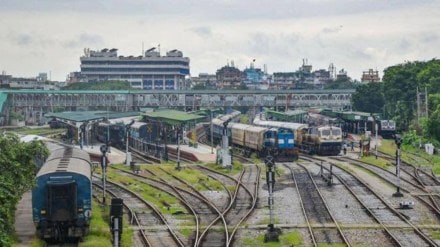The Cabinet Committee on Economic Affairs (CCEA), chaired by Prime Minister Narendra Modi, approved three significant railway projects on Monday (November 25), totaling an investment of Rs 7,927 crore. The projects include the construction of the Jalgaon-Manmad fourth line (160 km), the Bhusawal-Khandwa third and fourth lines (131 km), and the Prayagraj (Iradatganj)-Manikpur third line (84 km).
According to a government statement, these multi-tracking initiatives aim to ease rail operations and alleviate congestion on some of the busiest routes connecting Mumbai and Prayagraj. The expansion will provide much-needed infrastructural development, enhancing the efficiency of the railway network.
The projects align with Prime Minister Modi’s vision for a “New India,” focusing on comprehensive regional development that will drive local economic growth, create jobs, and boost self-employment opportunities. The statement highlighted that these projects will empower people in the region and enhance connectivity, making them more self-reliant.
New railway projects launched under PM-Gati Shakti National Master Plan
The government emphasised that these projects are part of the PM-Gati Shakti National Master Plan, which promotes integrated and multi-modal connectivity. This master plan aims to create seamless connectivity for people, goods, and services across the country.
The three railway projects will span seven districts across three states – Maharashtra, Madhya Pradesh, and Uttar Pradesh – and will expand the Indian Railways network by approximately 639 kilometers.
In addition to improving connectivity between major cities, the projects will improve accessibility to two aspirational districts, Khandwa and Chitrakoot, benefiting approximately 1,319 villages and 38 lakh people.
The new lines will significantly enhance travel along the Mumbai-Prayagraj-Varanasi route, benefiting religious tourism, particularly for pilgrims visiting prominent sites such as Trimbakeshwar and Omkareshwar in Maharashtra, Kashi Vishwanath in Varanasi, Prayagraj, Chitrakoot, and Gaya, as well as Shirdi in Maharashtra.
The improved infrastructure will also promote tourism to UNESCO World Heritage sites like Khajuraho, Ajanta and Ellora Caves, and other historical and cultural landmarks such as Devgiri Fort, Asirgarh Fort, Rewa Fort, and Yawal Wildlife Sanctuary.
The increased use of railways for freight and passenger services is expected to cut CO2 emissions by 271 crore kg, which is the equivalent of planting 11 crore trees. This would not only reduce logistics costs but also contribute to a more sustainable and green transportation network in India.
